‘Indiana Jones and the Dial of Destiny’ Director James Mangold Breaks Down His Ambitious and Emotional Ending
- Oops!Something went wrong.Please try again later.
- Oops!Something went wrong.Please try again later.
- Oops!Something went wrong.Please try again later.
- Oops!Something went wrong.Please try again later.
- Oops!Something went wrong.Please try again later.
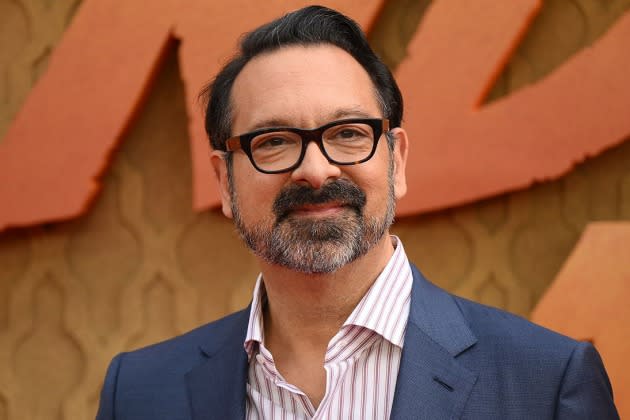
[This story contains spoilers for Indiana Jones and the Dial of Destiny.]
Indiana Jones and the Dial of Destiny director James Mangold is glad he not only met his heroes but collaborated with them, too.
More from The Hollywood Reporter
China Box Office: 'Indiana Jones 5' Bombs With $2.3M Opening
All 5 Indiana Jones Movies Ranked, Including 'Dial of Destiny'
Box Office: 'Indiana Jones and the Dial of Destiny' Cursed With $60M Domestic Opening
Dial of Destiny is Mangold’s twelfth feature film, but it was his second film, Cop Land (1997), that prepared him most for the job nearly three decades later. Cop Land boasted a cast of Sylvester Stallone, Robert De Niro, Harvey Keitel and Ray Liotta among others, and this experience conditioned the New York filmmaker for his current working relationships alongside industry titans such as Steven Spielberg, Harrison Ford, George Lucas, John Williams, Frank Marshall and Kathleen Kennedy. Mangold certainly anticipated moments where one of these heavy hitters would pull rank, but he was pleasantly surprised when just the opposite happened.
“One of the reasons I agreed to make the movie was because these Mount Rushmore figures of motion picture history came to me on such a personal and human level … and there was such warmth and such a lack of political complexity to the relationships with everyone,” Mangold tells The Hollywood Reporter. “I was ready [for that]. I imagined this would be the most politically complex movie I’ve ever made given the astronomical, legendary status of all the people involved. I felt so welcomed into the family, and it was one of the least complicated movies that I’ve ever made on those kinds of levels.”
So much of the conversation surrounding Dial of Destiny involves its bold ending, which was set up early on in the film. Before Indiana Jones and his estranged goddaughter, Helena Shaw (Phoebe Waller-Bridge), go on a globetrotting adventure in pursuit of Archimedes’ Dial, the Antikythera, Dr. Jones’ final lecture at Hunter College revolved around Archimedes’ role in the 213 BC Siege of Syracuse. Sure enough, after a series of events and conflicts with Mads Mikkelsen’s Jürgen Voller over the Dial, Indy and Helena wind up in the middle of that Roman conquest after Voller used the Dial to travel through a time fissure.
For Mangold, the ambition of his ending is in keeping with the entire franchise, whether it’s the ghostly spirits that annihilated the Nazis at the end of Indiana Jones and the Raiders of the Lost Ark or the ancient Grail Knight that Indy met in Indiana Jones and the Last Crusade.
“[Indiana Jones movies] are always a kind of fanciful interaction between an aspect of history, science and miracles, and so my goal with the end of the picture was to have a big swing, which is a staple of these movies at the end,” Mangold says. “I wanted Indy to be confronted with something that would not only challenge his notions of belief, but also tempt him in a way. Life in the modern world had gotten disillusioning enough that the idea of actually living in history might be a temptation for him.”
Below, during a recent spoiler conversation with THR, Mangold also discusses why Helena ultimately rejected Indy’s wishes to live out his remaining years in the past, before explaining the origin of Indy and Marion’s (Karen Allen) concluding scene together.
Well, titans of industry usually know how their presence affects people, so did Steven Spielberg try to disarm you or put you at ease when you first agreed to take over for him?
Well, neither. He welcomed me. He was part of the contingent that approached me about doing this, so I certainly wouldn’t have even thought of this as being a possibility if Steven and I hadn’t had a private engagement with each other about what was happening. And then I understood I had his blessing and his support. I was going to need it.
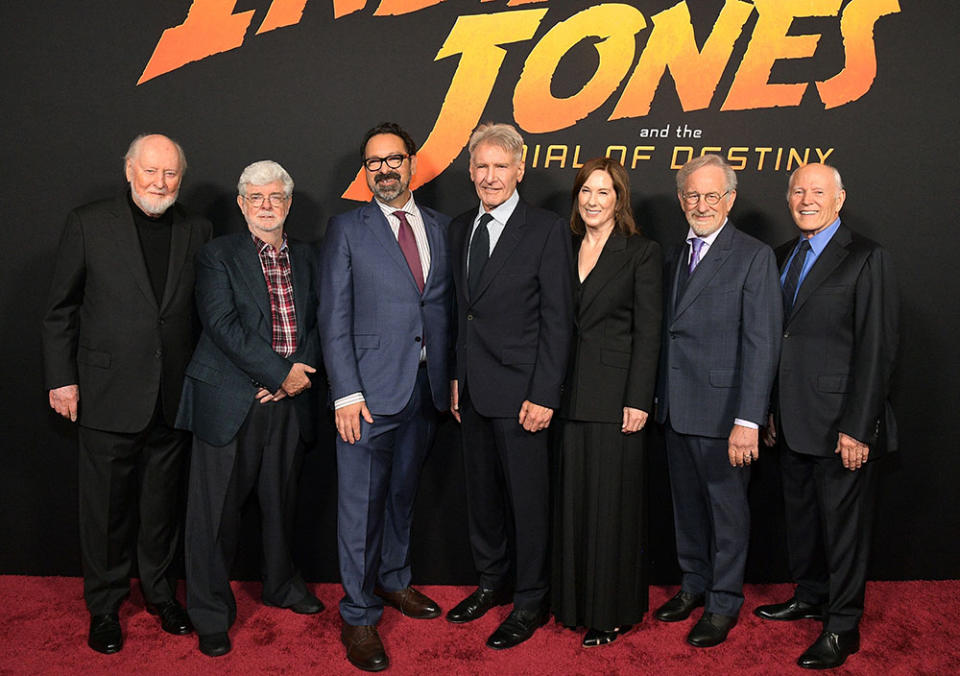
When you eventually screened the movie for him, were you pacing back and forth outside the screening room for two-and-a-half hours? Were you beside yourself?
There was no eventually, meaning that Steven was involved as myself, Jez Butterworth and John-Henry Butterworth wrote. I would send pages to Steven, Harrison, Kathy Kennedy and George [Lucas], so I’d hear from everyone. I wrote an original treatment that shaped what the movie was going to be, involving the Antikythera, time and a character based on Wernher von Braun in the space program, and I presented that to Steven. And then, as we entered prep, I would show Steven animatics of action I was planning, and as I shot, Steven would watch dailies. He was shooting Fabelmans here in the U.S. while I was shooting Indy in England, and we would talk. The time difference almost worked really well for us, because Steven would often call me during my late night and his early day, and on weekends. So I’d say we talked at least once or twice a week as he watched dailies. Steven then came in very early on, and I showed him the movie when it was just an assembly that was well over three hours.
One of the reasons I agreed to make the movie was because these Mount Rushmore figures of motion picture history came to me on such a personal and human level. I didn’t feel like I had won a bake-off. It felt like a one-off engagement with me thinking about this possibility, and there was such warmth and such a lack of political complexity to the relationships with everyone. I was ready [for that]. I imagined this would be the most politically complex movie I’ve ever made given the astronomical, legendary status of all the people involved.
But I had an experience [27] years ago making Cop Land that really educated me. It was my second movie, and it had a cast of Sylvester Stallone, Robert De Niro, Harvey Keitel, Ray Liotta and I can keep going on. Now, one would expect that to be a hard cast to manage, but over the years, I’ve learned that when you have a movie that has so many legendary people, everyone becomes equal in a way. Its power is more like the Security Council at the United Nations. Power is very evenly divided, and all sides become highly collaborative. Everyone is very comfortable with each other because there’s such mutual respect, and so I credit this to Steven, Harrison, Kathy, George and John Williams as well. I felt so welcomed into the family, and it was one of the least complicated movies that I’ve ever made on those kinds of levels.
So, what was it like showing the movie to Steven for the first time? I probably showed it to Steven seven times, meaning that he was just really involved and engaged all the way through: before we mixed, after we mixed, when effects came in. He was a marvelous producer and mentor on the movie.
It was quite a sight to see the Indiana Jones brain trust introduce John Williams’ live performance at the L.A. premiere. Has it sunk in yet that you and your film are the recipient of his final film score?
No, because John is still writing music. All this “final” stuff is for others to figure out when it’s really final. John is a vital and creative 91-year-old composer who just finished writing over two hours of music for my movie in pencil, and then he conducted that music with a 300-person orchestra over a period of a year. If you hear the energy and the passion of the music, I just couldn’t consider him done writing music. But I do have to tell you that I felt the honor and the awe in my heart, particularly the first session, when John started to play what he had written for my picture. I felt like I was watching an EPK for some other movie, only it was in my own eyes and I was living through it, first person. I could not believe I was hearing this music, and John was turning to me from the podium and going, “Shall we try this? Or shall we try that?” And if you don’t know him, he’s one of the kindest, most charming guys. He is a jazz musician. He came up as a jazz pianist. He’s from Queens. If you call him, he’ll often go, “Hey, baby.” He’s this really disarmingly charming man, without any of the pretense of “maestro” as it were. While at the same time, he has all of the grandeur within him to conduct an orchestra like that.
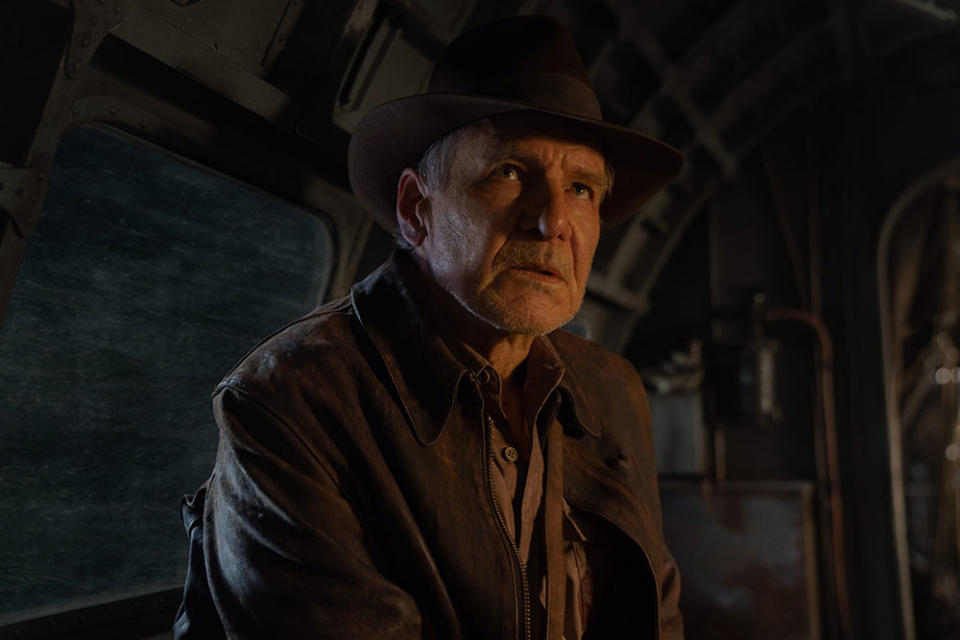
Life is filled with peaks and valleys, and I appreciate when my fictional heroes, such as Indy, have their own ups and downs. So why does a segment of the audience seem to want these legacy characters to be infallible? I just can’t figure out why anyone would want such little drama.
Well, there’s a point where these characters become symbols more than characters, and so there becomes this anxiety that if you examine the humanity of a hero, you somehow weaken them. And honestly, I can’t speak for how fans relate and wrestle with these questions in relation to other movies, but certainly in relation to mine, I think your question almost has my answer built into it. I mean, I think you’re in a sense already addressing it. Good drama gives a hero a problem. If a movie is about a beautiful hero who is capable of anything and is virtually indestructible and is without any personal issues or concerns, then you just have a fashion video with action. I am a fan of starting a character in one place to go to another. Movies are a continuum. By definition, in drama, a character starts in one place and ends up in another. So, if people want to be divisive [in the age of social media], they can focus on where a character starts, as opposed to where they end, or they can focus on where they end, as opposed to where they start. In reality, for Harrison who’s playing this character, he’s tracing an arc and he’s changing through the whole picture. So it all depends on where you’re landing and where you’re pointing your finger on that timeline.
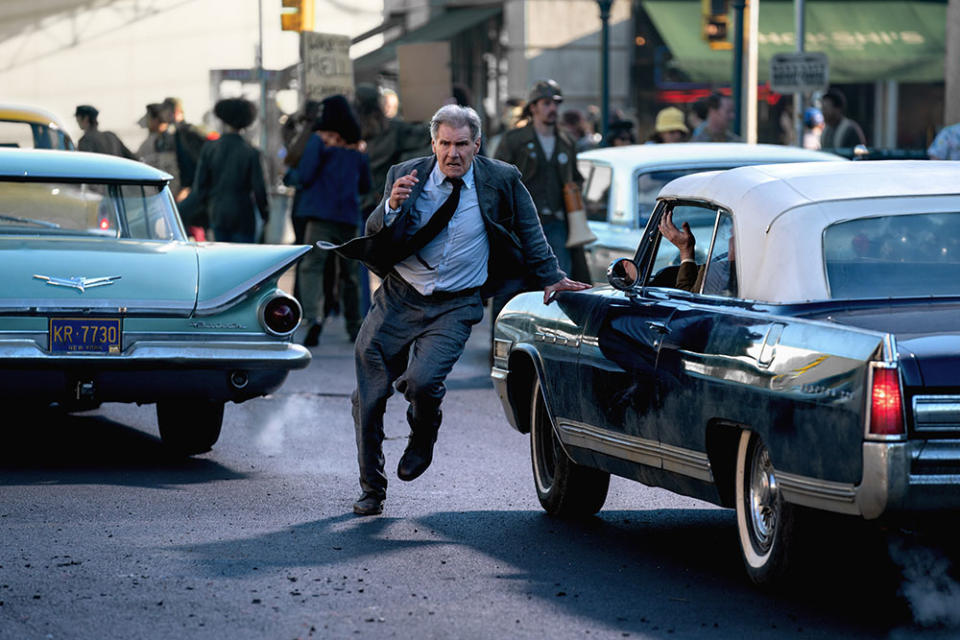
In a way, Harrison also reprises the role of Dr. Richard Kimble for a stretch of this film, and there’s just always something so satisfying about seeing him on the run from the law. Did this come up at all? Did you guys have a laugh about it? [Writer’s Note: In Dial of Destiny, when Indy becomes a fugitive, he flips up the collar of his blazer just like The Fugitive’s Dr. Richard Kimble did in a futile attempt to become less recognizable.]
Yeah, there was one point when Harrison took off his jacket. He made the decision at a midpoint in the picture to take off his jacket, and I was a little nervous that he was starting to look Clear and Present Danger, so I know exactly what you mean by Richard Kimble. In my own analysis of how the film works, we open with this 20-minute segment in 1944, and I’m trying my best to give you a Golden Age version of Indy in the ‘30s and ‘40s when all the elements of the Indiana Jones palette are so harmonious: the John Williams score, the sense of balletic action, the virility and capability of the star, the sense of lighting and color, the fedora and the Nazis at the height of the war. And John was just letting the orchestra run wild to all of it. He was letting the horses out of the barn, if you will. And then the most fascinating cut for me was that cut to 1969 when we find Indy, now 70, in his apartment in New York. And the big question the movie asks of the audience is, “How did we get from there to here? And what happened?” So the movie begins to answer it.
But the other aspect that gets to your Richard Kimble part is that while John and I talked early on about letting the full Indy theme run in the beginning, I thought that when we got to 1969 and found Indy having lost his mojo, there’s no better definition of a character losing their mojo than they can’t quite hear their theme anymore. And so John immediately started scoring. I said, “I think you will be scoring a kind of ‘70s picture, a Three days of the Condor,” and he goes, “I can do that. I am a ‘70s composer.” And so the movie then shifts and becomes more of a score of that time and less of the themes of Indy, until he gets to Morocco and puts on the hat and starts to find his mojo again. The theme returns with that. So it’s a very interesting flow that John and I trace musically. The movie almost ends up being a gigantic overture at the front and then a loss of that theme, and then a slow rebuilding toward the final reels when John once again lets the horses out of the barn, if you will.
Alright, I’m really reaching on this one, but there’s a famous video of David Blaine doing a card trick for Harrison in his kitchen. And David bowled Harrison over so much that he said, “Get the fuck out of my house,” in a way that only Harrison can. Did that video remotely inspire Helena’s (Phoebe Waller-Bridge) card trick scene on the boat?
I’ve actually never seen it. I’ve seen it pop up, but I’ve actually never clicked on it. Helena’s card trick scene on the boat was actually inspired by Barbara Stanwyck in Preston Sturges’ The Lady Eve. One of my thoughts before we had even written the script was that we had to get Phoebe in this movie. I saw her as a kind of Stanwyck or Kate Hepburn in a modern era. I mean, Phoebe’s a thoroughly modern woman and modern character, but in a way, there’s also a throwback quality to her articulateness, her verbal almost musicality, the way she handles dialogue and her comedic style and chops. There’s so much about her that reminds me of these Golden Age heroines of the ‘30s and ‘40s, and yet she’s someone who’s thoroughly modern. But anyway, it was Barbara Stanwyck in that movie, and that was where the deck of cards came from, if it came from anywhere.
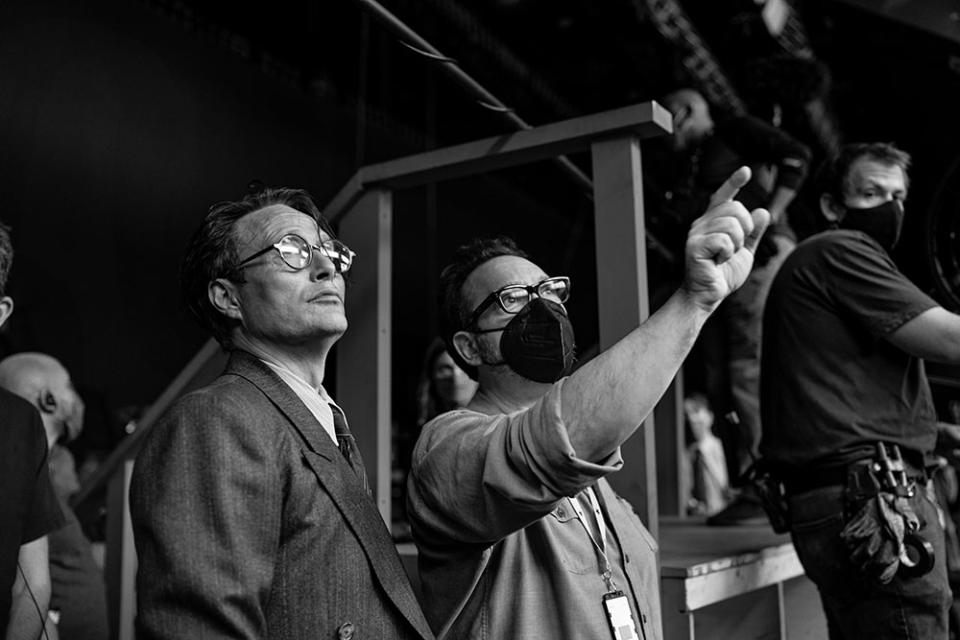
I love when I’m in a position to root for the villain to some degree. Of course, I wasn’t pulling for another round of fascism; I was just hoping for the Dial to be used. So I’m glad you didn’t commit a half measure in that regard. How did the powers that be react to time travel at first blush?
Well, I never presented it as time travel. I never really thought of it as time travel. There’s this way the press can frame a story that can then help drive the story. We worked for three years on the opening sequence, but only in the last 30 days have people started calling it the “AI sequence at the beginning of Indiana Jones.” So I never thought about this as time travel per se, although they certainly go through a portal in time at the end of the movie. But the movie isn’t about time travel. It’s about time, it’s about getting older and it’s about the world changing around you. And as long as there’s been Indiana Jones movies, the power of the relic has always had some kind of dialogue with the theme of the movie itself. So it was no shocker.
When I came on the film, even before I committed to the film, I auditioned this idea I had about making the movie about time itself, but not turning it into an H. G. Wells movie any more than Raiders of the Lost Ark. Someone in this age could go, “Raiders of the Lost Ark is a biblical prophecy movie.” No, it’s just a movie where someone opens a box that contains Christian relics and angels come out and the sky opens up, but it is not necessarily a kind of a religious picture. What it’s all really about is this continuing dialogue between a secular hero driven by science and fact, who lives in a world of books and history, and is continually confronted with things beyond belief. These things come from history and somehow lead us to confronting miracles of all different kinds, whether it’s a Knight of the Round Table living for 2000 years in a cave or voodoo warriors reaching into chests and pulling out hearts or creating zombies or the Ark of the Covenant exploding the heads of only people with their eyes open.
[Indiana Jones movies] are always a kind of fanciful interaction between an aspect of history, science and miracles, and so my goal with the end of the picture was to have a big swing, which is a staple of these movies at the end. I wanted Indy to be confronted with something that would not only challenge his notions of belief, but also tempt him in a way. Life in the modern world had gotten disillusioning enough that the idea of actually living in history might be a temptation for him.
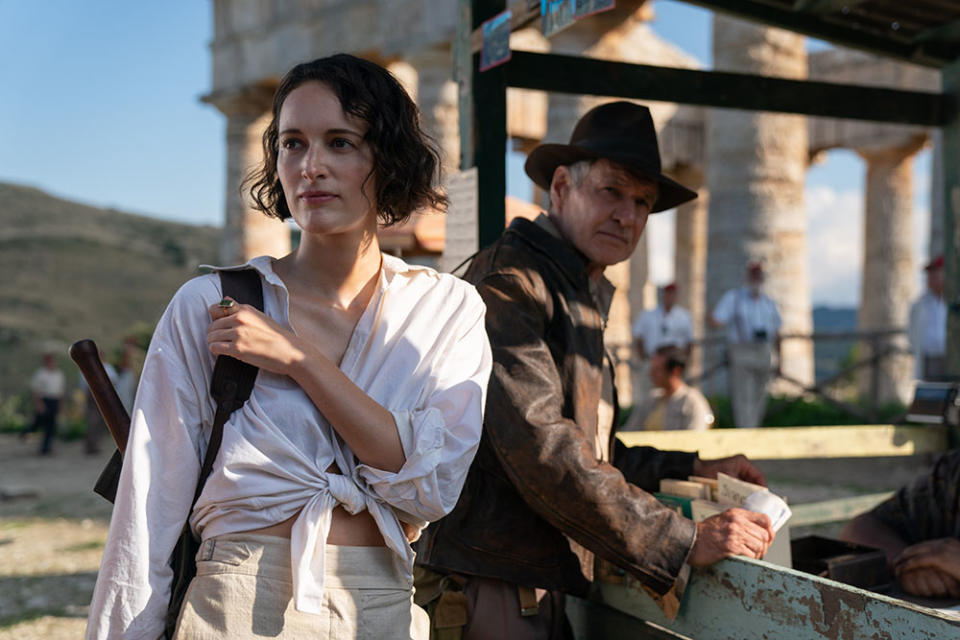
Helena began the movie by manipulating Indy, and by the end, she’s outright refusing to let him give into that temptation and stay in the past. Why is she so insistent that he return to 1969?
Because she loves him and she needs a father. She needs him. If the movie has anything to say, it’s on the simplest level. You have a father who’s lost a son and a daughter who’s lost a father, and both have become lost in the world. Helena is lost through cynicism, and Indy is lost through a kind of malaise and a feeling of being obsolete. And so to me, they’re in desperate need of each other while they’re battling each other through most of the picture. They’re also in desperate need of each other’s influence, and I never saw Helena as without a heart. I always saw her as wounded by the fact that Indy vanished from her life at a certain point when she needed someone like that. She says to him, “Godfather, what does that really mean anyway?” but she was the living definition of someone needing a godfather. Her father died when she was young and the godfather never showed. And so this movie became a chance for this particular father to prove himself again, and in his own way, climb out of the grief he felt about his own loss.
For the final scene, did the reversal of Raiders’ wound-kissing scene stick pretty early?
Yeah, Jez and John Henry [Butterworth] came up with that. When we came up with the idea of Marion coming back at the end, that idea came to Jez and John Henry pretty early and was pretty brilliant. And we shot it pretty early, because we shot Karen’s scenes in the second or third month of production, and the power of her coming in really landed. I mean, it landed more when I could see the whole journey in getting to that scene and bringing those two together. But Karen literally came to set and worked two days. She landed and just dropped in, and the chemistry between her and Harrison was, of course, immediate. It’s something they had developed over many years.
***
Indiana Jones and the Dial of Destiny is now playing in movie theaters. This interview was edited for length and clarity.
Best of The Hollywood Reporter
Natalie Portman at Cannes: "I Need to Leave the Drama for the Screen"
Ailing ‘Superman’ Star Valerie Perrine Finally Finds Her Hero: "The Guy Should Be Sainted"

